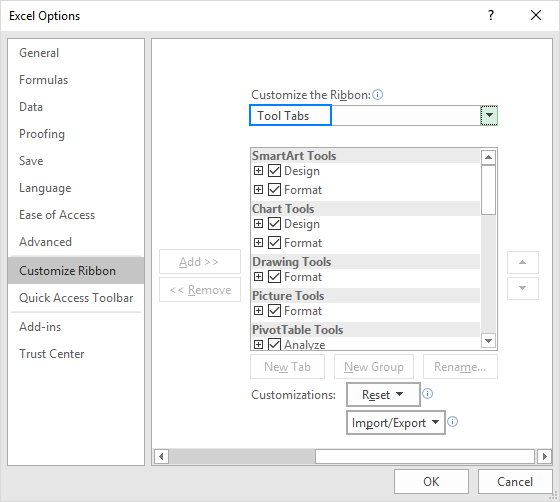

If the XML is poorly constructed, this method will fail, so ensure that you use the right structure when you build your XML string. This class has the SetCustomUI method that then uses the xml variable input to define the new ribbon. Notice that we use the ActiveProject class, which is an internal class in the Office framework. This subroutine simply creates the ribbon. Let's take a look at what this subroutine looks like. With the ribbon string created, we can now create a subroutine that adds the ribbon customizations to the user's main Excel menu. You can have your button and ribbon bar perform any task that you need. In this string, you create a tab called "Highlight" that lets you toggle a task's color. You will likely need to build your own by looking up the tags and necessary values or using a third-party tool. As you can see, the xml string is extensive and has several tags.
Access 2016 create custom ribbon vba code#
The code above builds an XML string and assigns it to the variable xml. The following is an example of a custom ribbon XML string. Whatever you choose, you must have valid XML and each tag must have the right value for Excel to parse the information.

You can build an XML string manually or using a tool. We'll use an example XML string to show you what an example ribbon looks like. Since there are several options, you might need to perform a lookup on Microsoft's site to understand each element and value.

Microsoft XML is specific to Office, so it can be difficult to understand. There are some third-party tools that can work with Excel and other office productivity tools to create custom code for you.
Access 2016 create custom ribbon vba how to#
In this article, we will work with the Excel ribbon and show you how to edit it for your own application customizations.īefore you write your subroutine, you need to create custom XML code that is used to specify the ribbon layout, color and format. You can execute, run, close or review your application from a ribbon. The user can then use this ribbon to work with your application. The code would identify if the ribbon already exists, and then it adds the ribbon if it does not already exist in the interface. You could launch code that runs when the user opens Excel. You can't change the main components of a ribbon using VBA, but you can create your own custom ribbon using VBA.įor instance, suppose you want to create a custom ribbon and button for your new VB application. The ribbon interface has changed a bit from Office 2007, but the basic concept of a ribbon remains. Since Microsoft Office 2007, Microsoft uses a graphical interface for its menu items called ribbons.


 0 kommentar(er)
0 kommentar(er)
